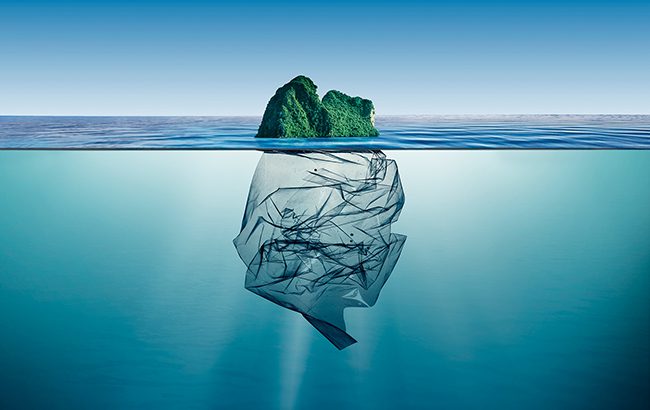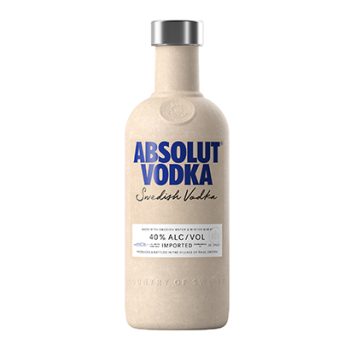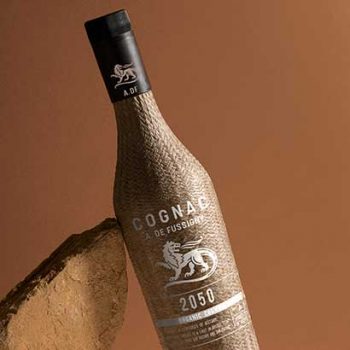Can paper packaging be premium?
In an attempt to cut down on glass usage to become more sustainable, spirits companies are creating packaging and bottles from plant-based materials and paper. But does this compromise the sense of luxury?

*This feature was originally published in the August 2023 issue of The Spirits Business magazine.
Every year, 40 billion glass spirits bottles are produced around the world, generating 22 million tonnes of carbon emissions, according to ethical review platform Really Good Culture. Lately, spirits brands have started to trial more sustainable packaging, be it secondary packaging in the form of eco-cannisters, such as Don Papa Rum’s recent gift box, or a total upheaval of the bottle altogether, transforming the glass into cardboard, for example Johnnie Walker’s paper-based vessel, unveiled in 2020.
But is this a fad or the future? Can paper bottles work for premium products? And what do consumers really want?
“Paper, just like glass, is a very versatile material. It can be seen as cheap or very exclusive,” explains Elin Furelid, director of future packaging for The Absolut Company. As the vodka producer is trialling its paper bottle rollout in 29 Tesco stores around Manchester, UK, it could be a permanent step in the cardboard direction.
 “Our long-term aim is to build a range of sustainable packaging that covers all relevant occasions,” says Furelid, “which is why the Absolut Paper Bottle will sit alongside the iconic Absolut Vodka Original glass bottle.”
“Our long-term aim is to build a range of sustainable packaging that covers all relevant occasions,” says Furelid, “which is why the Absolut Paper Bottle will sit alongside the iconic Absolut Vodka Original glass bottle.”
Additionally, a number of spirits brands have released sustainability roadmaps, such as Diageo’s Society 2030: Spirit of Progress plan. With these, brands are aiming to reach net-zero emissions by a particular date. With packaging largely considered under the umbrella of this target, it seems the practice of creating bottles from sustainable materials is here to stay.
Yet, one pushback against sustainable packaging a brand may have is a paper bottle detracting from its iconic branding, or its premium look. Furelid notes that it is of “upmost importance” to know what your distinctive brand assets are, and what design elements create that “instant brand or product recognition”.
She says: “If you ensure that these assets, including bottle shape and brand logo, are replicated from traditional packaging to sustainable, the new product will remain a true reflection of the heritage and branding.”
For the on-trade, the concept of refilling bottles and redesigning renowned branded bottles may not be such a challenge. EcoSpirits is a major player in the sustainable packaging space, using circular packaging technology to allow spirits to be transported in bulk to local markets. The spirits are processed into a reusable 4.5-litre ‘ecotote’ for delivery to on-trade venues, yet the company maintains it protects the brand because bar staff can refill and reuse branded bottles, therefore also sustaining the premium look of the bottles too. For some brands, exploring sustainable packaging won’t necessarily detract from the brand’s established look, or its premium feel.
Chris Egger, co-founder of Italian brand Portofino Dry Gin, says: “Brands should explore innovative materials and design techniques, including recycled, plant-based or biodegradable materials, incorporating minimalistic and elegant designs, that enhance the visual appeal of the packaging. Collaborating with sustainable packaging experts can also help brands find creative solutions.”
But the gin is not currently looking to transition from glass to paper, but instead is “sourcing sustainable and plant-based materials that will be integrated to replace plastic in our packaging”, says Egger.
Plant-based bottle
Paper bottles are not limited to major spirits brands, however, as demonstrated by A de Fussigny. In 2022, the Cognac house introduced its 2050 Organic Cognac in a plant-based bottle. At the time president Thomas Gonan said exclusivity would not be imposed on the bottles “so that it can be developed widely in the market”.
Speaking to SB, Gonan says: “We’re very small so we’re taking a risk – it’s a lot of money. But we don’t have a choice. We all live in the same world, and we have no choice but to innovate.” He reveals that engineers approached the brand in 2021, asking if it was interested in being the first to use the flax bottle. “The project wasn’t totally complete. It was not the best bottle in the world, or what we were looking for in a luxury bottle, but we thought we couldn’t miss this opportunity to make people change their mind about it,” explains Gonan.
 It seems sustainability trumped the need for a more premium look for A de Fussigny. The company discovered its glass bottle creates 35% more carbon emissions than the flax bottle, given the high temperatures and energy needed to create glass from sand. “It’s an innovation, a first bottle, so of course it’s not the perfect bottle straight away, says Gonan.” A paperless and inkless label also features on the bottle, which washes off with hot water without chemical residue.
It seems sustainability trumped the need for a more premium look for A de Fussigny. The company discovered its glass bottle creates 35% more carbon emissions than the flax bottle, given the high temperatures and energy needed to create glass from sand. “It’s an innovation, a first bottle, so of course it’s not the perfect bottle straight away, says Gonan.” A paperless and inkless label also features on the bottle, which washes off with hot water without chemical residue.
I ask Gonan if the bottle feels premium. He responds: “That’s an issue for us. You have to explain to the consumer, and they then understand and agree on the innovation. But when it’s on the shelf, it’s hard to be recognised. Most people like the idea and are ready to buy it. We need to meet more producers and brands to work with this kind of bottle. Otherwise, we will not win the game. Glass is beautiful, but do we really need glass? The liquid inside is the same, and we remain a luxury brand because Cognac is a luxury product.”
One aspect of sustainable packaging brands may disagree with is secondary packaging, in the form of gift boxes, canisters, and more. Scotch whisky brand Bruichladdich recently redesigned its signature bottling, The Classic Laddie, without a secondary tin. This contributed to eliminating the single malt’s packaging CO2 emissions by 65%, which is the equivalent of taking 182 cars off the road on Islay, according to the brand.
Matt Burns, executive creative director at Thirst, which worked with Bruichladdich to create the packaging, explains: “It’s about leading the way in shifting habits – it proves you don’t need to have secondary packaging to represent luxury, quality, or to be interesting.”
But Renan Joel, managing director of packaging at event company Easyfairs, disagrees with this take. “Multipacks and secondary packaging are key to creating a sustainable alcohol brand,” he says. “The key is to combine functionality and consumer convenience with sustainability. Paperboard packaging has come a long way in terms of its functionality, with barrier coatings available to increase durability in moist or chilled environments, for example.
“Packaging still has to be desirable as well as sustainable, especially in highly competitive categories. If the packaging isn’t desirable or functional, it won’t sell, which adds up to more waste.”
While he acknowledges that “cutting secondary packaging is a worthwhile initiative”, Joel insists: “Eliminating secondary packaging entirely doesn’t work for all spirit brands. For those that use multipacks and gift sets it still matters, and can be mademore sustainable”.
With regard to how these sustainable materials interact with premiumisation, Joel says: “Using innovative designs, sustainable packaging can actually enhance a brand’s premium look. An Ipsos study found that more than six in 10 [63%] US consumers think paper and cardboard packaging make a product feel more premium or high quality.”
Looking at glass
These findings from the poll were recorded in 2018 on behalf of the Paper and Packaging Board. While the question referred to products in general, rather than spirits, it raises the subject of just how necessary glass is in the spirits packaging industry.
Paul Davidson, managing director at crystal glassware manufacturer Glencairn Crystal, considers the brand’s product to have advantages in sustainability because it lasts “for life”, and is “rarely, if ever, thrown away by the recipients. We’re proud that we have created an entire product portfolio that is not destined for landfill.”
Yet cardboard is a more sustainable option, and according to Really Good Culture’s AI-driven The Future of Spirits, 56% of consumers say their perception of a brand is influenced by its sustainability practices. The same report also found that 69% of food and drink enthusiasts would pay more money for products that are ‘better for the environment’ than the global average (54%).
The adoption of sustainable packaging may not always be a responsibility of brands and producers, as Furelid notes. A key challenge “is around recycling systems and behaviour”. “We could develop the most sustainable packaging there is but if it’s not recycled or there is no recycling system in place to handle it – it doesn’t matte,” Furelid adds.
With this in mind, some brands may feel they have a valid excuse for not venturing into sustainable packaging – it could be seen as counterproductive until the system becomes more accommodating to the recycling of various sustainable materials, a power that lies in the hands of governments.
Companies that feel the creation of a paper-based bottle is a step too far just yet, such as Portofino Dry Gin, may express their environmental commitments in other ways, such as by supporting non-profit organisations working towards global reforestation.
It seems the world is still a long way from seeing the spirits aisle lined with paper-based bottles, but brands are moving towards contributing to a greener environment, be it with small steps or larger leaps. Concerns about appearing premium or presenting original branding with paper bottles appear to be minimal, as key challenges facing sustainable packaging development seem to be cost, functionality and recyclability.
But every brand has a dog in this fight, and if smaller producers such as A de Fussigny are working towards expanding their use of flax and paper-based bottles, perhaps it’s time for the drinks giants to step up their production of sustainable packaging too.
On top form: Amorim
Leading closures producer Amorim Top Series introduced a range of sustainable stoppers in early 2021, tying into the brand’s commitment to create eco-friendly products. The Portuguese company offered a vast assortment to choose from: the Re-cork range, Wood Tops, and a 100% cork stopper.
Creating sustainable packaging is not an easy feat – but it’s a challenge the producer hopes to be able to alleviate for the spirits trade.
“We understand that in the world of spirits, there is no one-size-fits-all solution for all products, which becomes one of the biggest challenges to producing sustainable packaging solutions, since we need to be aware and have knowledge of all the trends and novelties in the different materials that we use to develop our capsules.”
What’s your biggest challenge when it comes to producing sustainable packaging?
Mike Dolan – co-founder, Mijenta Tequila
“Like nearly all companies, many of our partners experienced logistical difficulties stemming from the pandemic, which previously led to certain delays and other challenges. However, as the stress on global supply chains has alleviated, sourcing and production have become more predictable.”
Chris Egger – co-founder, Portofino Dry Gin
“The biggest challenge is finding alternatives to traditional materials that are both environmentally friendly and maintain the necessary functionality, durability, and aesthetics. It can be difficult to strike the right balance between sustainability and practicality, as well as ensuring cost-effectiveness.”
Paul Davidson – managing director, Glencairn Crystal
“Meeting our customer’s need for ever-evolving, innovative, market-leading, cost-effective packaging solutions in as sustainable a manner as is possible.”
Paul Gabie – CEO, EcoSpirits
“There is a lot of interest in the reuse economy, but the challenge is finding reuse solutions that are globally scalable. Transitioning entire industries from single-use, resource-intensive models to sustainable resource-efficient solutions is incredibly complex. We believe the answer to scaling reuse solutions lies in the incredible power of technical innovation.”
Related news
Top 10 spirits for gifting this summer
